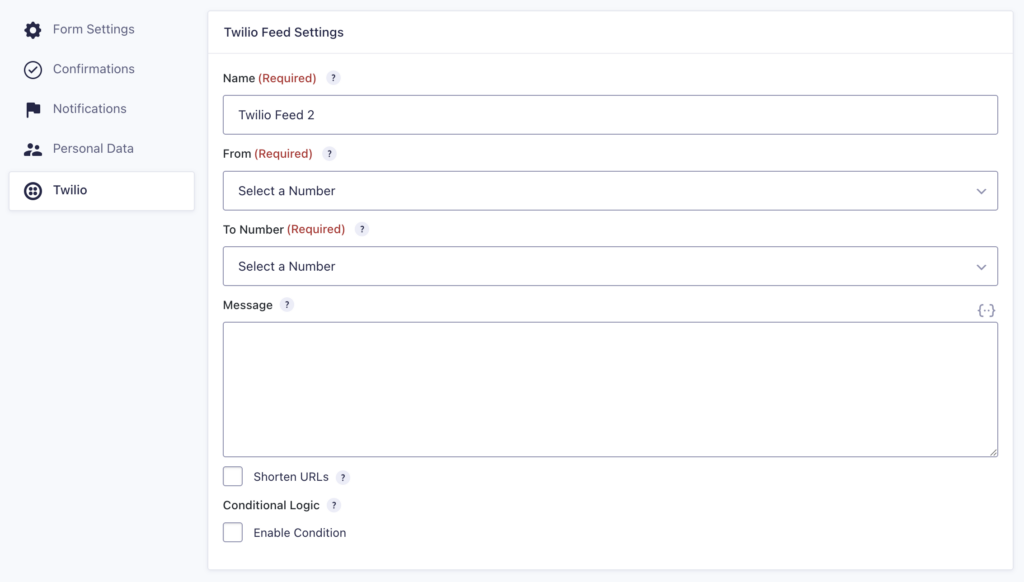Summary
Before the Twilio Add-On can be used with Gravity Forms, you will first need to create a feed. A feed simply allows form submission data to be sent to another source. In this instance, form submissions are being sent to the Twilio API.
Create a Feed
To create a feed to Twilio using the Twilio Add-On for Gravity Forms, do the following from your WordPress Admin Dashboard:
- Click on Forms in the left side menu.
- Select the form that you want to use with Twilio.
- Once within your desired form, hover over Settings and click on Twilio.
- Click Add New to create a new feed. You will be presented with the Twilio feed settings screen.
Feed Settings Reference
The following fields are available within the settings screen. Refer to the settings screenshot below.

| Setting | Description |
|---|---|
| Name | The feed name is used only for internal identification. It will not be visible publicly and will only be shown in your feed listing. Required |
| From | The dropdown shows available phone numbers from your Twilio account. If multiple numbers exist, select the one you wish to use. Alternatively, if Alphanumeric Sender ID is enabled in Twilio SMS settings, you may select that. Required |
| To Number | Enter the recipient’s phone number. Use a fully numeric 10-digit number with area code for local formats, or include the country code for international formats. Required |
| Message | Write the SMS message you would like to be sent. You can insert fields submitted by the user by selecting them from the ‘Insert merge code’ drop down. SMS message are limited to 1600 characters. Messages larger than 1600 characters will automatically be split into multiple SMS messages. |
| Shorten URLs | Enable this option to shorten URLs in your message using Bitly. Bitly support must be configured in the Twilio Add-On settings before this feature can be used. This setting is only available when a Bitly Token was configured in the Twilio Settings. |
| Conditional Logic | The content of your SMS notification. You can use merge tags to populate the message with form data dynamically. |